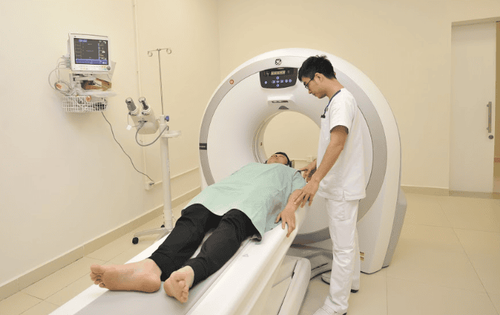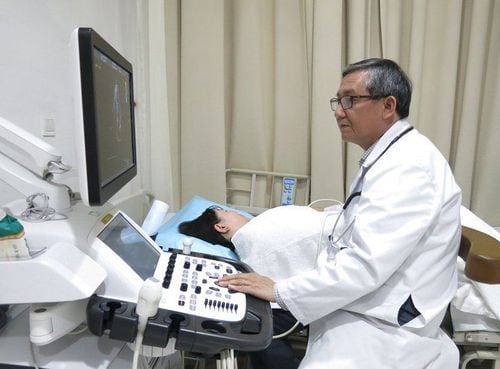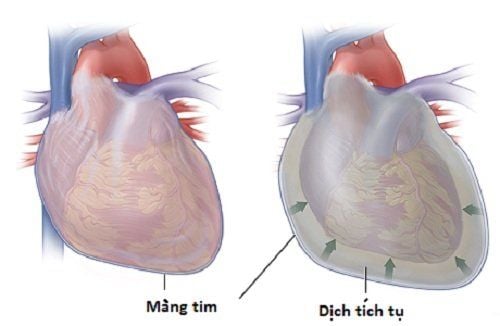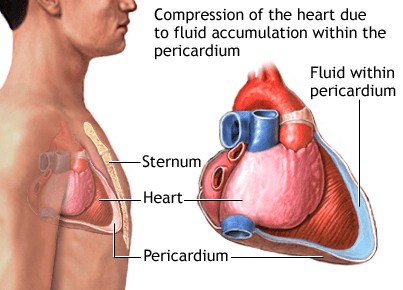This is an automatically translated article.
The article is professionally consulted by Master, Doctor Bui Tien Dat - Emergency Medicine - Cardiology - Emergency Resuscitation Department - Vinmec Hai Phong International General Hospital. The doctor has more than 12 years of experience in the field of emergency resuscitation - cardiology.Acute tamponade is a condition in which fluid or blood accumulates in the pericardium causing pressure on the heart, limiting its function. This is an acute case of multiple etiologies, requiring emergency management to release cardiac tamponade.
1. Overview of acute cardiac tamponade
Causes leading to accumulation of pericardial fluid leading to acute cardiac tamponade include: Trauma; infection; tumor; may be due to idiopathic pericarditis; systemic diseases such as lupus erythematosus, renal failure, heart failure ...Diagnosis of acute cardiac tamponade is usually based on Beck's triad, which includes 3 signs seen in acute cardiac tamponade, including:
Low blood pressure and weak pulse due to impaired cardiac function Increased venous pressure: Distended neck veins due to difficult return of blood to the heart, enlarged liver, elevated central venous pressure Tachycardia, weak apex or pulse lost, paradoxical pulse (meaning that the pulse is weaker or completely lost on inspiration).
2. Treatment regimen for acute cardiac tamponade

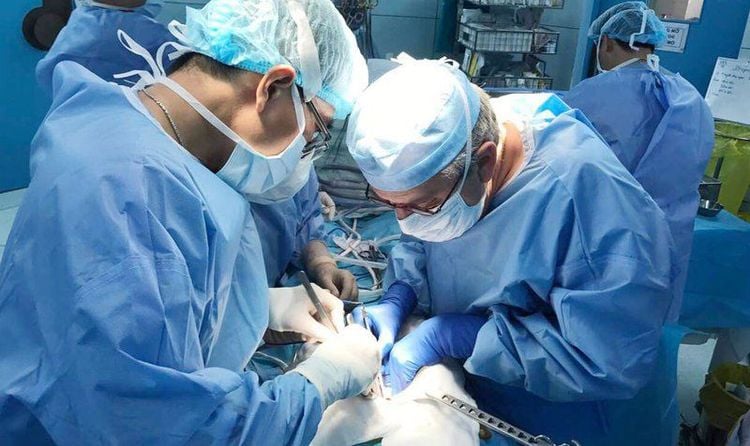
Indications:
If cardiac tamponade is mild, not rapidly progressing: Just clinical monitoring, no intervention. In case of moderate to severe cardiac tamponade with elevation of CVP 10mmHg or higher or systolic blood pressure <100mmHg: Indication to remove the fluid by aspiration or by surgical method. Preparation:
Needle 18 (for rapid aspiration, can aspirate thick, viscous fluid) or set of catheters Fork 3 to aspirate fluid, remove it and attach it to a manometer to measure the pressure in the pericardial cavity. Syringe 25mL or 50mL. The monitor monitors the heart rate continuously during the puncture. Electrocardiogram attached to the needle (alligator electrode) to check the needle tip position makes the procedure safer. Technical implementation:
There are 2 methods of effusion:
Pericardial effusion under the guidance of a fluorescent screen. Pericardial puncture under ultrasound guidance. Place of puncture: Choose a suitable location for each case.
Dieulafoy line: The bald spot in the V intercostal space is 1-2 cm outside the apex of the heart, toward the spine. Marfan line: Place the puncture just below the tip of the sternum, pointing the needle towards the left or right shoulder. This puncture site is preferred because it avoids the pleura, important coronary arteries, and is more convenient for drainage. Any position and direction of needle: Follow the guidance of echocardiography so as to remove the most fluid. Note: In case of catheter puncture, up to 48 hours after puncture. Number of removals:
Unlimited. If there is a large amount of fluid, after manual aspiration to decompress, continuous drainage should be placed to avoid withdrawing too much fluid too quickly. Usually, the drainage rate is not more than 1.5 l/24h. Pay attention towards the end of the procedure, the higher the risk of the needle tip touching the pericardial wall. So it needs to be closely monitored. Analysis of fluid after aspiration:
Meaning: To help guide or help diagnose the cause of cardiac tamponade such as tuberculosis, fungus, cholesterol, malignancy... However, the selection of tests Any pericardial fluid testing to determine the cause should be based on clinical presentation. From the clinical manifestations, if any disease is suspected, the corresponding test is indicated. Some in-depth tests from pericardial fluid such as: Test for cancer cells, tuberculosis bacteria, other bacteria, viruses, do some other biochemical tests. 2.4 Medical treatments Rehydration: To increase ventricular filling. Resuscitation : If the patient has a collapse or severe shock for the patient on O2, administer vasopressors at dose adjusted according to blood pressure Treat the cause: If the cause is identified, combination therapy is needed to address the cause. cause disease.
3. Follow-up after cardiac tamponade treatment

Monitor the patient's condition, pericardial fluid Monitor for possible complications Prevent recurrence of acute tamponade by draining standard fluids, finding and Treat the cause, comorbidities If catheter drainage is usually removed within 24 - 48 hours to avoid the risk of infection. Before removing the catheter, it is necessary to do echocardiography to check the pericardial fluid. Some possible complications: The patient's life-threatening event is < 5% if the aspiration is under ultrasound guidance and the aspirator has a experience).
Touch adjacent structures such as: liver, pleura, coronary artery, heart muscle. Possible risk of sudden death There is a risk of recurrence after aspiration: If after 3 days the volume is still above 300ml/24h, it is necessary to actively treat, or choose methods to prevent recurrence of pericardial fluid. such as pericardial fibrosis, chemotherapy, surgical intervention. Treatment of cardiac tamponade needs to be quick, to resolve the compression. Then find and fix the cause. Mortality rate is related to time to treatment, cause of cardiac tamponade.
To protect heart health in general and detect early signs of myocardial infarction and stroke, customers can sign up for Cardiovascular Screening Package - Basic Cardiovascular Examination of Vinmec International General Hospital . The examination package helps to detect cardiovascular problems at the earliest through tests and modern imaging methods. The package is for all ages, genders and is especially essential for people with risk factors for cardiovascular disease.
If there is a need for consultation and examination at the Hospitals of the national health system, please book an appointment on the website to be served.
Please dial HOTLINE for more information or register for an appointment HERE. Download MyVinmec app to make appointments faster and to manage your bookings easily.
SEE MOREDiagnosing pericardial effusion Treatment and care for people with pericarditis Compression heart syndrome: What you need to know





